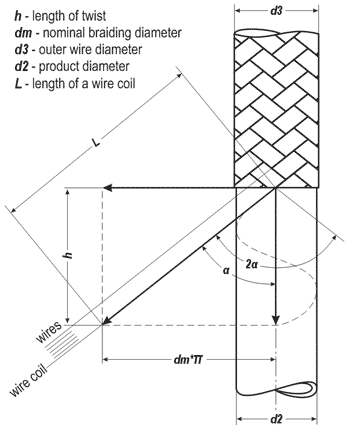Function
The braiding:
- prevents longitudinal expansion of corrugated hoses at pressure or tensile stress;
- causes an increase in the internal stability of the hoses by many times.
The braiding (single and double) is very flexible and adapts to the movement of the hose in an ideal manner. It is fixed to the connection fittings of the hose by welding or by pressing.
Metal braiding can be also used as protective material or for styling purposes.
Basic wire materials for brading production are: soft low-carbon steel GOST 3282-74, stainless steel GOST 18143-72, brass GOST 1066-93, bronze GOST 15834-77, copper GOST 2112-91, zinc-coated GOST 1526-81 or GOST 3282-76, GOST 792-67, GOST 7480-73, nickel plated and aluminum-backed wire with a temporary resistance to 880 N/mm2 for heat-treated wire and to 1470 N/mm2 for thermal untreated wire.
In the production process the measured amount of wire is wound around one strand of the coil. Then measured amount of coils, rotating at a constant speed for a given trajectory around the axis of the product or a blank, braids its surface. During braiding process, the product or a blank need to be broached in an axial direction. Broaching speed specifies the braiding angle between wire coils.
Possible braiding angle for metal wire coils, used for RNVD and RMV hoses production is in the range of values from 38° to 55°. The braiding angle of 55° is the most effective. If so, the braiding will be able to include the maximum volume and will not allow changes of volume.
The function of the wire braiding is based on the principle of the Nuremberg scissors.


